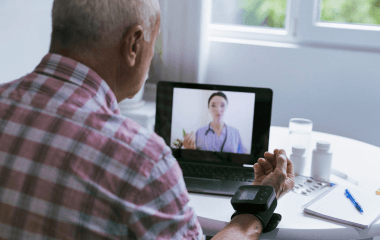The Office of Inspector General (OIG) recently released a report, “Additional Oversight of Remote Patient Monitoring in Medicare is Needed.” It highlights the growing use of remote patient monitoring (RPM) services in Medicare and underscores the need for stronger oversight to ensure the proper implementation and billing of these services.
Background
Medicare provides coverage for RPM services, which involve using technology to monitor patient health remotely. RPM has seen substantial growth, with its potential for improving patient outcomes and lowering costs in the health care system. The OIG’s research focused on Medicare fee-for-service (FFS) and Medicare Advantage plans, analyzing the utilization of specific RPM billing codes: 99091, 99453, 99454, 99457, and 99458. These codes represent various RPM services, including the time spent monitoring patient data and the setup and education required for using RPM equipment.
RPM Utilization and Provider Breakdown
The OIG report found that RPM services were primarily delivered by providers in primary care and cardiology. However, sleep medicine also made up 3% of the total providers, positioning it among the top five specialties using RPM services. This highlights the wide applicability of RPM across different medical disciplines.
Key Findings
The OIG identified several critical trends and concerns in the report:
- Significant Growth in RPM Utilization
- Incomplete Service Delivery
- Potential for Fraud
- Lack of Information for Oversight
OIG Recommendations
In light of these findings, the OIG made several recommendations to strengthen the oversight of remote patient monitoring in Medicare:
- Enhanced Documentation and Coding Requirements
- Additional Safeguards Against Fraud
- Requirement for Ordering Provider Information
- Integration of New Codes
You can download an OIG infographic summarizing the RPM report.
Implications for the Future
The OIG’s report underscores the importance of improving oversight for RPM services in Medicare. As RPM continues to grow in popularity and potential, ensuring that it is used effectively and ethically will be crucial for both patient care and cost management. The recommendations outlined in the report, if adopted, could help safeguard against fraud, improve care quality, and ensure that RPM is used to its full potential for Medicare beneficiaries.
Moving forward, health care providers, policymakers, and patients should collaborate on creating a framework that ensures RPM services are accessible, transparent, and appropriately regulated. With the upcoming RUC meeting in 2025 and the addition of new CPT codes, the landscape of remote patient monitoring in Medicare is likely to see further adjustments aimed at better service delivery and oversight.
While RPM offers significant opportunities for improving health care, the OIG report serves as a timely reminder to AASM members to review the AASM Remote Monitoring Services Implementation Guide and to focus on detailed documentation when reporting remote monitoring services.
Please send all questions regarding remote patient monitoring to coding@aasm.org.





